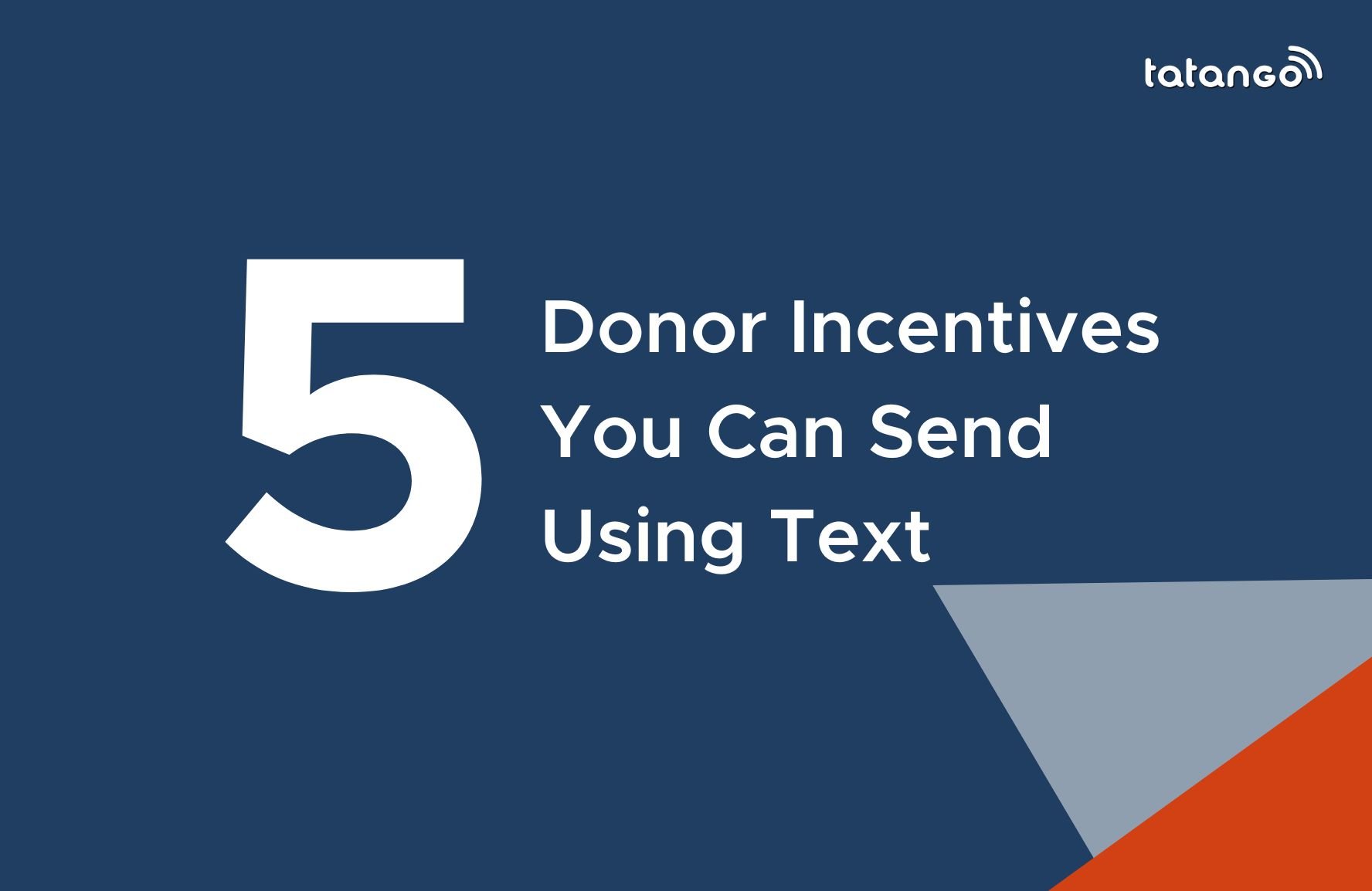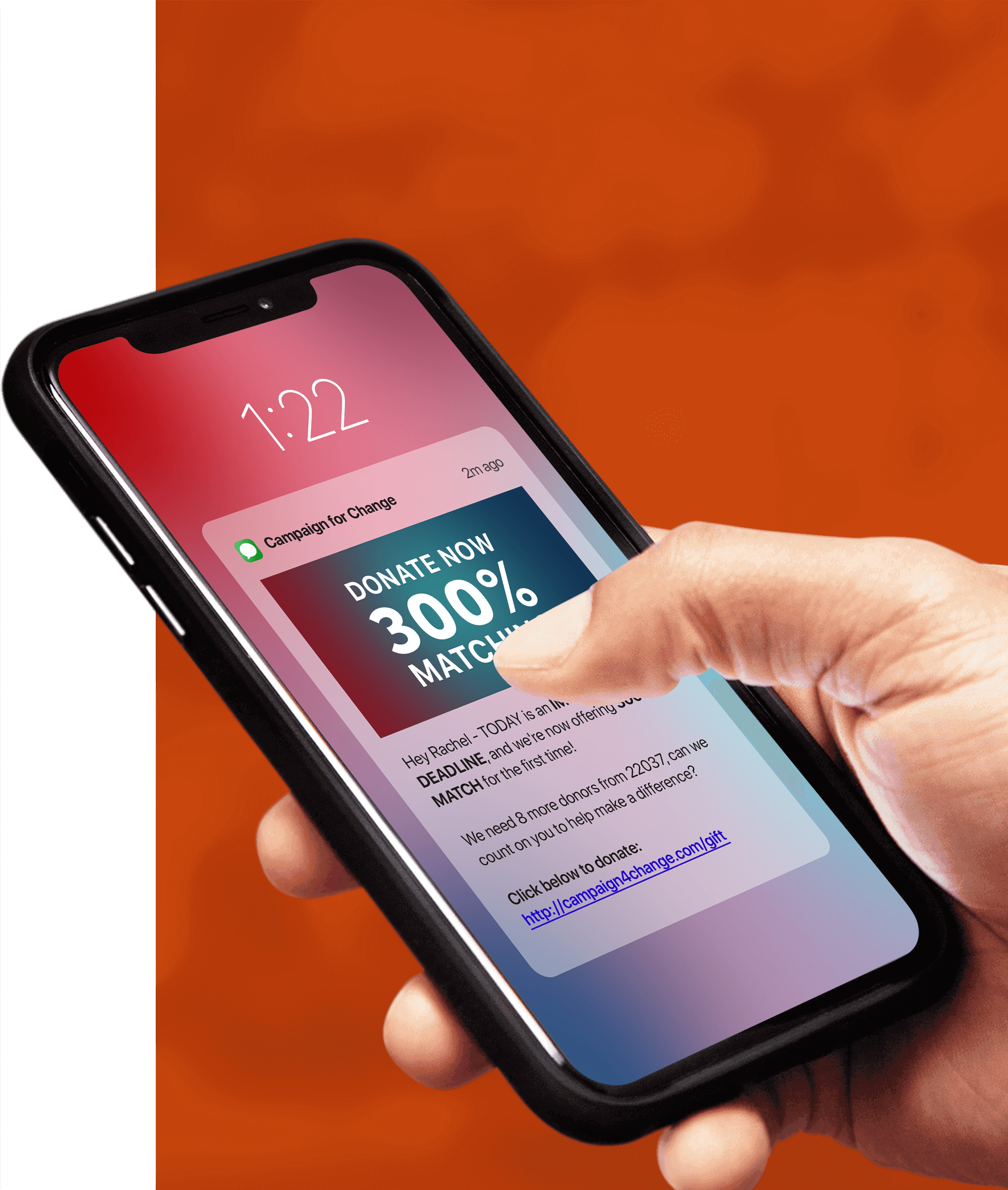As a nonprofit conservation organization, you’re likely always looking for ways to engage with your supporters and raise awareness and donations for your cause. One tool that can be particularly effective for conservation-focused nonprofits is text fundraising (also called text marketing or text-to-give fundraising).
In this blog post, we share a few reasons why nonprofit organizations in conservation should use texting in addition to email and other digital communication channels.
Text messages have high open and click-through rates
One of the biggest advantages of text fundraising is the high open and click-through rates. Studies have shown that text messages have an open rate of around 98%, with a click-through rate of around 45%. Text messages also have a 90% read rate within three minutes of sending. All of these statistics mean that when you send a text message, it will be read and acted upon very quickly. In fact, recent statistics show that on average, nonprofits sent 21 text messages per subscriber per year, a 28% increase in volume from 2021. Furthermore, many nonprofit organizations are seeing the value in texting as an innovative way to communicate with thier constituents. The M+R benchmark report noted that text subscriber list size increased by 11%. Nonprofits had 236 mobile subscribers for every 1,000 email subscribers.
However, relying only on email to reach supporters may not be the best approach for conservation-focused nonprofits. With people receiving many emails every day, email inboxes can become cluttered. It’s not uncommon for people to have hundreds or even thousands of unread emails in their inboxes. Unfortunately, that means that nonprofit emails can often get lost in the inbox. But by using text marketing in addition to email, you can increase the chances of your messages being seen and acted upon by your constituents.
Additionally, with the 4% decline in email revenue, (despite a 15% higher increase in volume from previous years), nonprofits are struggling to see a positive ROI from email alone. In fact, reports show that for every 1,000 fundraising messages sent, nonprofits raised $90. This marks a 15% decrease from 2021!
These statistics show that texting can be an innovative and effective way to communicate with constituents, raise awareness for their conservation efforts and achieve their fundraising goals. Conservation-focused nonprofits should consider using texting and email together as a way to engage with their constituents on various communication channels.
Quick and easy to use
Texting is also very efficient. It can be quick and easy to use, making it a great tool for busy nonprofit professionals and small teams. You can easily send a text message in just a few seconds, and donors can make a donation just as easily by replying to the text or clicking on a link.
Partnering with a platform that allows for both text-only messages and texts with graphics, GIFs, emojis, and video is important for creating compelling messages. Tatango’s design studio makes it easy for your organization to create on-brand and engaging messages at no additional cost to your organization.
Personal and engaging
Sending personalized and engaging conservation-related messages creates a sustainable relationship with your constituents and donors. With personalization tools, you can include the donor’s name, reference their past donations or actions, and tailor the message to their specific interests and needs. By using a personal and engaging tone, you can build stronger relationships with your supporters and encourage them to continue supporting your organization.
Text fundraising can be a powerful tool for nonprofit organizations in conservation looking to engage with their supporters and raise awareness and donations for their cause. With high open and click-through rates, quick and easy use, and personal and engaging messages, text marketing can help you effectively reach and engage with your donors and supporters.

